Preparing media
- after the plates have cooled, mark each stack with a line of the appropriate color (easy when plates are stacked)
- put them back in sleeves and tape those over
- write the media type, your name, and date on the tape
- clean up the hood completely! The lab that owns the hood has started to use it frequently again, so we need to make sure that we always leave it immaculate.
- store the new plates in the fridge in the teaching storage.
TSA media
Tryptic Soy Agar (same as Trypticase Soy Agar) (red stripe on plates)
- 40g of BD TSA powder
- 1L water of purified water
Autoclave, pour plates, stripe with red marker.
Nutrient Agar
(blue stripe on plates):
- 23g of Nutrient Agar powder
- 1L of purified water
Autoclave, pour plates, stripe with blue marker.
The following section refers only to media for culturing filamentous actinomycetes
Actinomycetes like dry media – let plates dry out before plating. Keep media with antibiotics in a cold and DARK place, to prevent degradation.
Cafaro & Currie 2005: Inoculum from an insect transferred onto chitin-agar plates, containing nystatin (10,000 units/mL). After 3–5 weeks of growth at room temperature, bacterial colonies are subcultured onto Czapek yeast autolysate agar with antibiotics (nystatin 10 000 units/mL and cycloheximide 5% w/v) (Cafaro & Currie, 2005).
An isolate is cultured in YMEA (4 g yeast extract, 10 g malt extract, and 4 g glucose per 1 L) at 30˚ C for 3 days. 20 mL of the YMEA culture was then inoculated to 200 mL of YPM (2 g yeast extract, 2 g peptone, and 4 g mannitol per 1 L). The YPM culture was incubated for about 15 h (for a subsequent use in spectroscopy) (Scott et al., 2008).
Humic acid-vitamin agar for actinomycete endophytic actinomycetes amended with nalidixic acid to suppress other bacteria (Hayakawa & Nonomura, 1989) and by cycloheximide and nystatin against fungi (Taechowisan et al., 2003).
(Crawford et al., 1993) tested many types of media for isolation of root endophytic actinomycetes, and found that the best was the nutrient-poor Water-Yeast-Extract agar (WYE) modified from that of Reddi and Rao) contained yeast extract (Oxoid; 0.25 g/liter) as the sole carbon and nitrogen source and agar (Oxoid; 18.0 g/liter). The medium was buffered with K2HPO4 (0.5 g/liter). (Chen et al., 2009) used the same media to isolate Pseudonocardia spp. from wood, used tap water (“TWYE” agar) and containing nalidixic acid (10 mg/ml), nystatin and cycloheximide (each at 50 mg/ml).
WYE does work for actinomycetes, but it tends to remain more damp than chitin media, so they germinate with lower frequency.
100 μg nystatin and cycloheximide/ml (Taechowisan et al., 2003)
Nystatin can be probably substituted with Natamycin (=Pimaricin). Soluble in DMSO. Sigma-Aldrich suggests not to autoclave or filter Nystatin solution.
PBS buffer can be substituted with 0.1 % Tween (which one?)
Emerson Media
(red & orange stripe on plates):
| Ingredient | Amount | |
|---|---|---|
| Soluble starch | 15 g | |
| Agar | 15 g | |
| Yeast extract | 4 g | |
| K2HPO4 | 1 g | |
| MgSO4.7H2O | 0.5 g | |
| Distilled water | 1.0 L |
- Mix all ingredients except starch.
- Microwave starch in ~50 ml dd H2O until transparent (~40 seconds).
- Pour dissolved starch into mixture.
- Autoclave.
